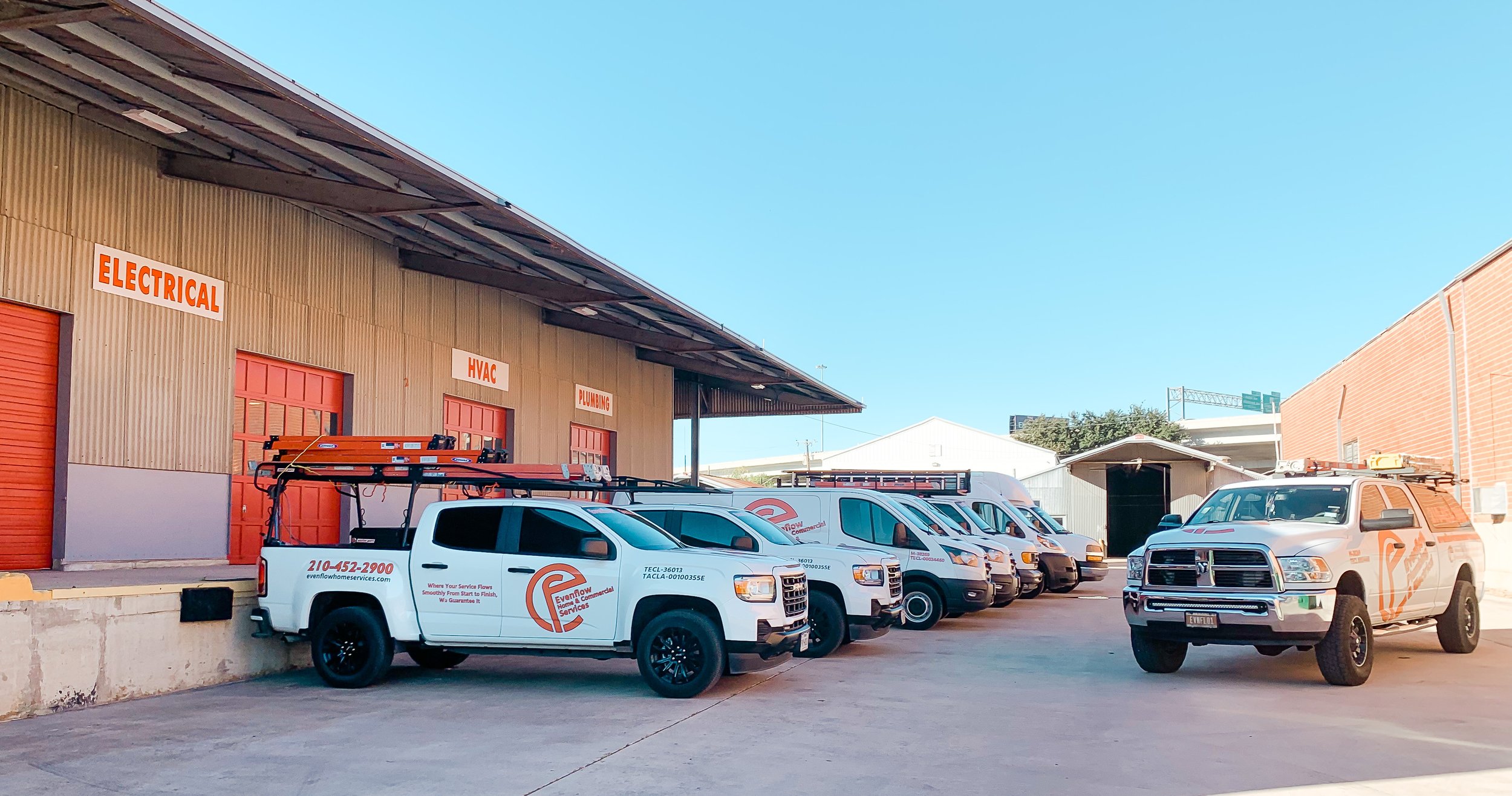
Furnace Heat Exchanger Replacement in San Antonio, Schertz, Converse, Floresville, Elmendorf, New Braunfels, and Surrounding Cities
Think of a heat exchanger as the furnace’s heat core. It’s an integral component of the heating process. This process differentiates gas furnaces from electric models, which produce heat using electric coils. Instead, furnaces combust fuel (gas or other varieties) to create heat in sealed chambers.
The mixture of combustion fumes and gas, often referred to as flue gases, is highly toxic. So how does a furnace heat exchange fit into this process? Essentially, it’s a thin metal cover that stands between the blower and the combustion chamber. Thus, it helps separate breathable air from toxic fumes. The chamber heats the furnace exchanger, warming the clean air, which then travels through the ductwork to the home’s interior.
The heat exchanger works without difficulty and prevents flue gases from entering the home only when securely sealed.
Signs a Furnace Heat Exchanger Is Bad
We usually assume that metal is durable and unchanging and forget that extreme heat can negatively impact metal objects. As the temperature of the heat exchanger rises, the metal rapidly expands. After the furnace switches off, the metal cools and regains its original shape.
The heat exchanger goes through the above process for years, sometimes even decades. Eventually, the metal becomes brittle and more susceptible to snapping, cracking, and similar damage.
As the metal weakens, homeowners may hear odd noises coming from the furnace. When this occurs, the heat exchanger is no longer an effective barrier between flue gases and the air inside the home. This failure is a safety hazard because flue gases may contain traces of carbon monoxide, an odorless gas notorious for being a silent killer.
It’s important to note that flue gases only contain carbon monoxide when the heat exchanger has cracked or is leaking. In these scenarios, the system is unable to combust gas properly.
Given what’s at stake with the risk of carbon monoxide poisoning, homeowners should address potential gas sources as soon as they suspect an issue.
Most heat exchangers have a service life between 10 and 20 years. Once the exchanger reaches the 15-year mark, consider scheduling a tune-up with a trained technician. They’ll assess the furnace, inspect the part, and determine whether replacing the exchanger is the best option.
Some damage may occur due to improper installation. For this reason, it’s best to work with a company with solid reviews.
Those who notice any of the following signs should contact an HVAC professional:
Damage or cracks due to metal fatigue
An unusual flame color
Soot buildup inside the exchanger
Metal discoloration
Many homeowners have invested in carbon monoxide detectors to protect themselves from accidents. But even homeowners who know what symptoms to watch out for may miss them. Fortunately, HVAC technicians specialize in providing tune-up and safety services.
SPECIAL OFFER
REVIEWS

Cities We Serve
San Antonio, Lakehills, Vernia, Mico, Castroville, Stockdale, New Braunfels, D'Hanis, Marion, Floresville, Bulverde, Shavano Park, Leon Valley, Castle Hills, Schertz, Selma, Boerne, Fair Oaks Ranch, Live Oak, Adkins, Lytle, Saint Hedwig, Terrell Hills, Converse, Elmendor, Pipe Creek, Rio Medina, Natalia, Devine, Atascosa, Somerset, Von Ormy, Macdona, Poteet, Leming, Sandy Oaks, Saspamco, Helotes, St Hedwig, Sutherland Springs, La Vernia, New Berlin, McQueeney, Timberwood Park, Garden Ridge, Bracken, Balcones Heights, Santa Clara, Hollywood Park, Alamo Heights, Kirby and Surrounding Areas
San Antonio Neighborhoods We Serve
Government Hill, Southtown, Lavaca, Monte Vista, Five Points, North San Antonio Hills, Eastside Promise Neighborhood, Tobin Hill, Mahncke Park, Oak Hills, Midtown, East Side, Woodlawn Lake, Alta Vista, Dominion, Uptown, Northern Hills, Hills and Dales, Dignowity Hill, Villa De San Antonio, Valencia, Northern Heights, Central Los Angeles Heights, The Heights at Stone Oak, Spring Creek, North Central Thousand Oaks, Denver Heights, King William, Lackland Terrace, Santa Fe Trails, Valley High North, Avenida Guadalupe, Vista Del Norte, Eden, Inner West Side, Memorial Heights, Gardendale, Inspiration Hills, Northhampton, Los Jardines, Highland Park, Edgewood, Northchase, Ridgehaven, Woodlake, Dellview, North Castle Hills, Oakland Estates, Elm Creek, Village at Big Country, McCreless Meadows, Rainbow Hills, Harvard Palace / Eastlawn, Hunters Mill, Towne Lake, Park Forest, Shearer Hill / Ridgeview, Greater Gardendale, Cable Westwood, Thelka, Loma Park, Skyline Park, Westwood Village, Highland Forest, Redland Woods, Pecan Valley Heights, Oak Haven Heights, Sonoma Ranch, Randolph Hills, Deerfield, Timber Ridge, Mountain View Acres, French Creek, Whisper Hollow, Redland Springs, Knoolcreek, Encino Ranch, Bluffview at Camino Real, Blanco Woods, Encino Park, River Rock Ranch, Misty Oaks, Coolcrest, Eastwood Village, Lorrence Creek, Shavano Gardens, Sunshine Estates, Far West Side, El Chaparral Fertile Valley, Greater Harmony Hills, East Pyron, Brady Gardens, Chrchill Forest, Fairways of Woodlake, Green Spring Valley, Emerald Forest, Oak Meadows, Cavalo Creek Estates, Greystone County Estates, Canyon Creek Village, Valley Forge, Oakmont Downs, Jake Oaks, Trophy Ridge, Pipers Meadow, Dreamhill Estates, Crownhill Park, Woodlawn Hills, Woodland Heights, Thunderbird Hills, Palm Heights


